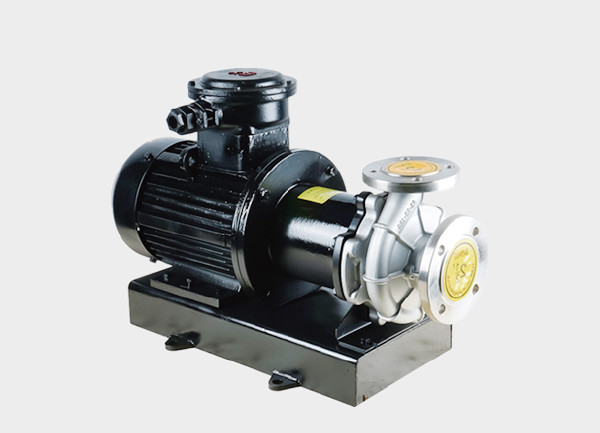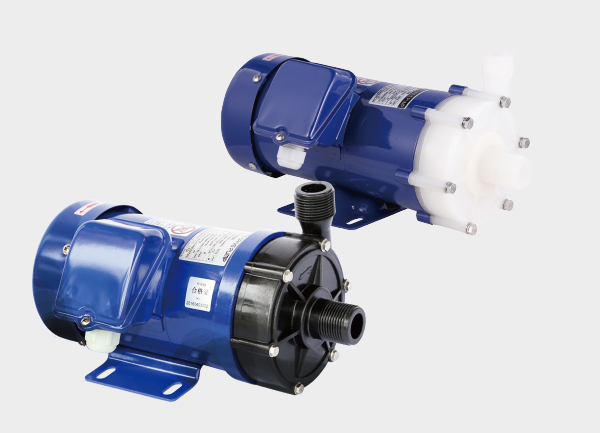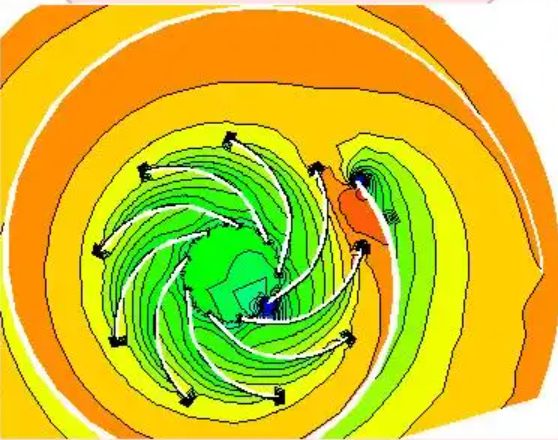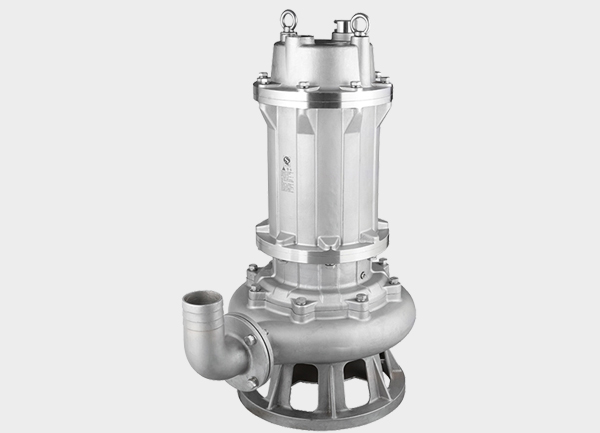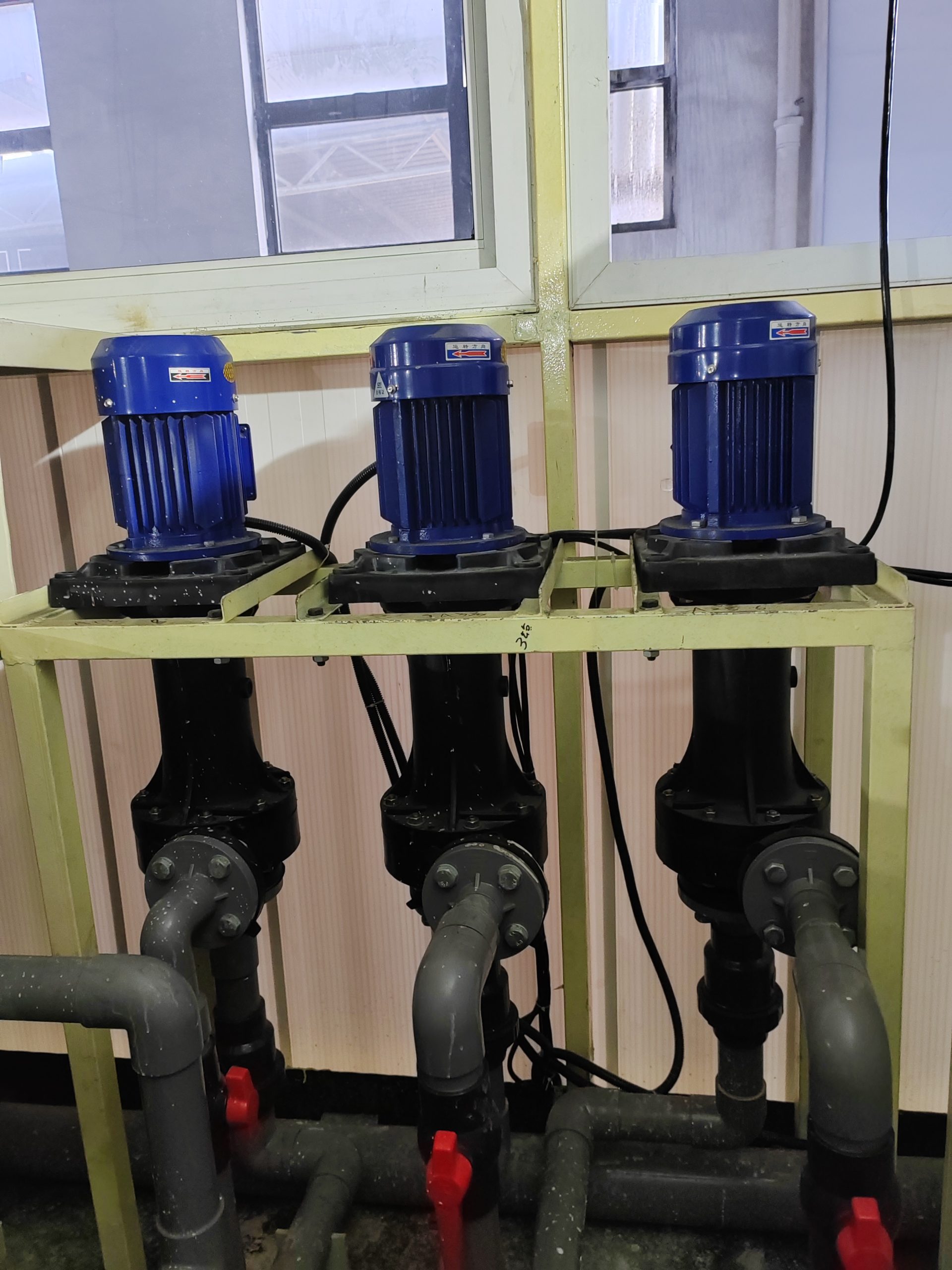1. Basic Concept and Structural Differences
Pumps are essential devices for fluid transfer, and their classification into vertical and horizontal types primarily depends on the orientation of the main shaft. This fundamental distinction determines their mechanical structure, installation layout, and operational characteristics.
Vertical Pump:
The main shaft is positioned vertically, and the pump body is typically connected coaxially with the motor. Some types, such as submerged or sump pumps, can be directly installed into the fluid without requiring a separate foundation.
Structurally, vertical pumps adopt a “motor-on-top + pump-below” configuration, which saves floor space and reduces transmission parts. Their sealing system is designed to prevent vertical leakage and handle submerged operation effectively.Horizontal Pump:
The main shaft runs horizontally, and the pump and motor are connected via a coupling (some smaller types are close-coupled). This design requires a baseplate or concrete foundation, occupying more floor area.
The structure includes an independent bearing housing and support base, ensuring stable horizontal alignment. The suction and discharge ports are usually positioned on opposite sides of the pump casing for convenient pipe connections.
2. Six Core Comparison Dimensions
1. Installation Space
Vertical pumps save ground space, making them ideal for narrow workshops, deep wells, or tanks. However, they require more vertical clearance.
Horizontal pumps, by contrast, need larger floor space and maintenance access but are better suited for spacious plants or outdoor installations.
2. Operational Stability
Vertical pumps have a higher center of gravity, making them more sensitive to fluid fluctuations and vibrations. Their stability depends heavily on foundation anchoring and regular lubrication of bearings.
Horizontal pumps feature a lower center of gravity, allowing smoother operation, smaller vibration amplitude, and more balanced bearing loads — ideal for long-term stable operation.
3. Maintenance and Accessibility
Some vertical pumps (especially submerged types) require lifting the motor or dismantling pipework to access key components like the impeller or mechanical seal, which makes maintenance more complex.
Horizontal pumps, being placed flat, allow easy access to seals, bearings, and impellers without removing piping, resulting in faster maintenance and lower downtime.
4. Applicable Media
Vertical pumps are better suited for corrosive, sediment-laden, or slurry-type fluids, as their design minimizes cavitation and clogging.
Horizontal pumps are commonly used for clean liquids such as water, oil, and lubricants, where debris-free operation ensures smooth transmission and less mechanical wear.
5. Cavitation Resistance
Because the suction inlet of vertical pumps is below the pump body, they operate under higher static pressure, improving NPSH performance and cavitation resistance.
Horizontal pumps require a stable suction line to maintain adequate inlet pressure; if the inlet is under vacuum, cavitation risk increases.
6. Efficiency and Energy Consumption
Vertical pumps may experience minor energy losses due to vertical transmission and complex internal flow paths, resulting in 3–5% lower efficiency than horizontal pumps.
Horizontal pumps deliver direct energy transfer with minimal mechanical losses, providing higher efficiency and lower energy consumption for continuous industrial use.
3. Application Scenarios and Selection Guidance
Typical Applications of Vertical Pumps
Special Environments: Used in wastewater treatment plants or power plant cooling systems for submerged operation that prevents clogging.
Space-Constrained Installations: Ideal for ship ballast systems, small reactor feed pumps, and other compact layouts.
Deep Liquid Tanks: Widely used in mining, metallurgy, and sedimentation tanks where long shafts can reach deep liquid levels without additional support.
Typical Applications of Horizontal Pumps
General Fluid Transfer: Perfect for city water supply, HVAC, or industrial cooling systems requiring easy maintenance and stable performance.
High-Pressure Applications: Used in petrochemical transport, hydraulic systems, and oil refining, where the robust structure ensures pressure reliability.
Large-Scale Industrial Use: Essential for continuous-duty systems like boiler feedwater pumps or refinery solvent pumps demanding high efficiency and durability.
4. Summary: Key Selection Principles
There is no absolute superiority between vertical and horizontal pumps — the right choice depends on operational needs:
Choose vertical pumps for limited space, corrosive or sediment-laden fluids, or submerged operation.
Choose horizontal pumps for stable, long-term service, easy maintenance, and clean media transport.
Additionally, consider factors such as flow rate, head, fluid temperature, and cavitation allowance (NPSH). When necessary, fluid dynamic simulations can further ensure accurate matching between pump performance and working conditions.



